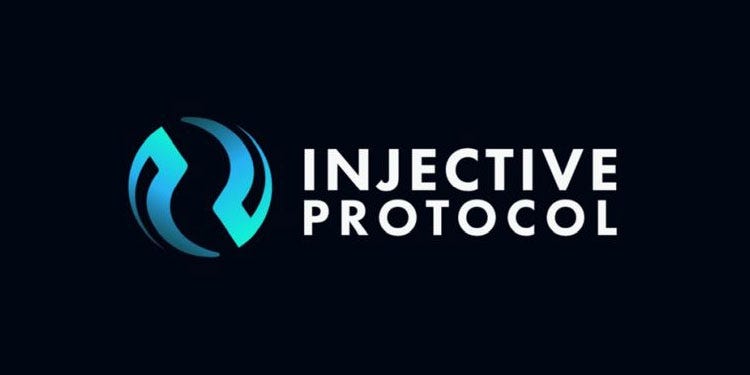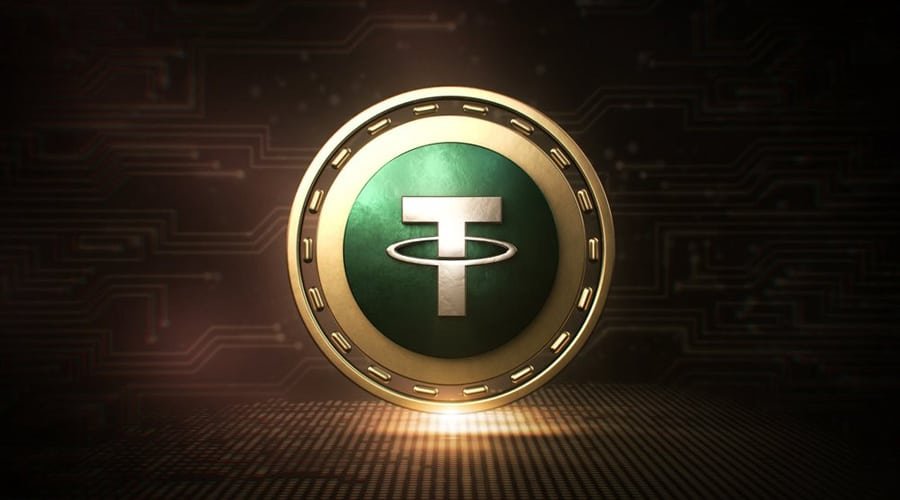The Injective Protocol is a layer-2 decentralized finance (DeFi) protocol for cross-chain derivatives trading.
The Injective Protocol enables cross-chain derivatives trading on Cosmos, Ethereum, and other layer-1 blockchain networks. Injective’s decentralized exchange employs a number of cutting-edge technological advancements that provide fast network speeds, superior security, and a high degree of decentralization.
Structure of Injective Protocol Exchange

The Injective Protocol is a decentralized exchange (DEX) protocol with advanced capabilities like cross-chain margin trading, derivatives, FX, synthetics, and futures trading. Injective was created as a truly decentralized, permissionless, and high-performance exchange system with no gas fees. This is accomplished using Injective’s Cosmos-backed layer-2 sidechain technology, which provides speed, accessibility, and decentralization through optimized connections to the main Ethereum chain.
The objective of Injective Protocol is to remove obstacles to DeFi markets, eliminate gas fees while keeping high transaction speeds, and give everyone a completely decentralized and infinite trading experience. In order to provide this comprehensive functionality, Injective Protocol incorporates several key features:
The Injective Chain, built on the Cosmos Tendermint standard, is a completely decentralized sidechain relayer service that serves as a layer-2 derivatives platform, trade execution coordinator (TEC), and decentralized order book. Injective provides unrestricted access to a cross-chain decentralized derivatives marketplace.
Layer-2 protocol speed: The Injective Chain enables the usage of a two-way peg for Ethereum (ETH) and ERC-20 tokens. It also features an Ethereum Virtual Machine (EVM)-compatible execution architecture for several decentralized applications (dApps) (dApps). The peg-zone design of Injective is built on the Cosmos Gravity Bridge, which allows value to be transferred between the Cosmos Hub and Ethereum, while the EVM execution framework is based on Tendermint’s Ethermint EVM implementation. This allows for strong cross-chain compatibility and liquidity.
Cutting-edge decentralized order book: Injective’s order book solution is a fully decentralized order book that matches orders on the Injective sidechain, with transactions resolved in batches on-chain.
Market formation and utilization are unrestricted: The Injective Futures Protocol enables completely decentralized peer-to-peer trading using everlasting swaps and contracts for differences (CFD) derivative products. Furthermore, Injective Protocol enables anybody, at any moment, to establish their own derivatives market, fostering an ecosystem of permissionless, community-driven innovation.
Low network latency and no gas prices: Due to the unique layer-2 structure of Injective, the protocol is designed to minimize network congestion and the associated high gas fees. Its zero-gas fee methodology enables all platform users to trade openly without incurring costs, while also lowering network latency.
Who Are the Injective Labs Founders?
Injective Labs was the first research and development business to contribute to Injective Protocol.
Eric Chen is an Injective Labs co-founder. Prior to starting Injective, he worked as a cryptographic researcher and trader at a major crypto fund, where he oversaw creative market neutral trading activities in the blockchain area, as well as investments in notable firms such as 0x, ChainLink, and Cosmos. Chen has a deep awareness of both eastern and western blockchain-based protocols and communities, as well as broad knowledge of blockchain protocols and traditional banking.
Injective Labs’ CTO is Albert Chon. He earned a Bachelor’s and Master’s degree in computer science from Stanford University and worked at Amazon as a software development engineer. He is well-known for co-founding Injective Labs with Eric Chen and for pioneering a new Ethereum standard that is now adopted by a number of significant enterprises.
What Sets Injective Protocol Apart?
Injective allows anyone to access, build, and trade an unlimited number of DeFi markets. This means that crypto, futures, perpetual, and complicated financial derivatives can all be traded totally decentralized on Injective. Trades are executed in milliseconds, have immediate finality, and incur no gas costs. Injective users can trade across multiple blockchain networks, including Ethereum, Cosmos, and Binance Smart Chain.
Injective can also promote exchanges between Cosmos-based projects like Terra.
Injective is the first interoperable protocol designed specifically for decentralized finance applications. Anyone may construct new cross-chain DApps using Ethereum-based tooling, quick transaction times, and instant finality, all while enjoying unrivaled developer incentives.
The native Ethereum compatibility enables developers to use existing Ethereum technology to boost the performance of their DApps. DeFi apps can be run by anyone across parallel chains to reach millions of consumers with indefinite scalability.
How Secure Is the Injective Protocol Network?
The Injective Protocol blockchain uses a proof-of-stake (PoS) consensus mechanism based on Tendermint. Prominent validators contribute to network security while also making it more decentralized.
The consensus process used by Injective delivers instant transaction finality while resulting in a 99 percent smaller carbon footprint.
INJ Tokens’ Role in the Injective Protocol Ecosystem
INJ is the Injective Protocol’s native utility and governance token. It is essential for governance, derivatives collateralization, protocol security, market maker and relayer incentives, and capturing exchange fee value.
Protocol and Ecosystem Governance: Using a decentralized autonomous organization (DAO) structure, the INJ token allows users to engage in ecosystem governance by voting on proposed modifications to the futures protocol, exchange settings, and other protocol enhancements.
Derivatives Collateral: The INJ token can also be used as a stablecoin alternative to provide collateral for margin trading and the use of Injective’s derivatives market. Additionally, in select futures markets, INJ can be utilized for collateral backing and insurance pool staking, allowing stakers to accrue interest on their locked liquidity provider (LP) tokens.
Proof-of-Stake (PoS) Security Using Tendermint: The Injective Protocol is protected by a PoS consensus based on Tendermint. Staking rewards are used by the ecosystem to motivate nodes to participate in network consensus. This process increases the supply of the INJ token, which begins at 7% per year at the genesis launch and gradually drops to 2% over time.
Market Maker Incentives: Initially, the Injective DEX charges exchange fees of 0.1 percent for makers and 0.2 percent for takers. Market makers who contribute to bootstrap liquidity on the DEX trading platform are eligible for fee reductions. These market maker rewards will be provided on a regular basis by analyzing exchange balance snapshots from user accounts to calculate fee savings for certain periods of use.
Injective Protocol’s Key Technical Components
The Injective DEX is a highly technological device that was created to be censorship-resistant, trustless, and publicly verifiable while providing consumers with a smooth user experience. To make all of this feasible, the technological architecture of Injective Protocol is constructed on four separate layers of the software development stack.
When a user logs into the trading site, they will see the Injective Exchange Client. The Injective Application Programming Interface (API), which contains the Exchange API, Coordinator API, Derivatives API, and The Graph API, makes up the service layer (used to connect The Graph indexing query system to help realize derivatives trading on the protocol).
The APIs described above are utilized to identify how various portions of the system interact and communicate in order for the full technical stack to function properly. They function as the intermediary layer that allows the Injective Exchange Client to communicate with the Tendemint-based Cosmos layer.
Cosmos Layer: On the opposite side of the software stack, the Injective API and the Injective EVM RPC are linked to the Injective Chain and the Injective Explorer, which is used to keep track of all Injective Chain transactions. The Tendermint blockchain was chosen as an appropriate foundation for the Injective Protocol because it can enable the instant finality required to execute various spot trading and derivatives order types.
The Injective Bridge smart contract, which communicates with the Injective Chain and the Ethereum network, completes the Ethereum layer. This is made achievable through Injective’s bi-directional ERC-20 token bridge, which allows INJ-based assets to be exchanged back and forth between Injective and the Ethereum network. Because it allows many networks to share data and assets, cross-chain interoperability is a crucial component of decentralized blockchain architecture.
The Injective Protocol for Smart Contracts
The INJ token is used to join the Injective Protocol. In the Injective ecosystem, the following Ethereum-based smart contract types provide crucial protocol interactions and token economics:
Injective Coordinator Contracts: Injective coordinator contracts make it easier to employ Injective’s derivative transactions on Ethereum as well as the Injective Chain.
Staking Contracts: Staking contracts are used to handle the essential functioning of the Injective Protocol for stakeholders via rewards, slashing, delegation, and governance mechanisms.
Injective Futures Contracts: Injective Futures Contracts are smart contracts that enable traders to construct, execute, and use decentralized perpetual swaps on any market of their choice.
Injective Bridge Contracts: Injective Bridge Contracts are smart contracts that govern the Ethereum-Injective Chain two-way peg.
Injective Token Contracts: Injective token contracts are ERC-20 contracts that are built for the various uses of the INJ token.
The Future Vision of Injective Protocol
Injective Protocol is paving the way for a new decentralized economy in order to establish a more free and inclusive financial system. Injective has developed a technology that enables cryptocurrency exchanges to become decentralized public utilities, providing customers and their communities with much-needed value capture in the exchange landscape. Injective’s technology allows everyone in the globe to participate in cross-chain blockchain-based derivatives, futures, and forex trading.
Injective Protocol is creating an exchange paradigm that has the ability to disrupt the industry as we know it by utilizing technology breakthroughs that boost settlement and trade execution speed in a genuinely decentralized, permissionless, and censorship-resistant manner.
INJ Live Price Data
The current price of Injective is $6.48 USD, with a 24-hour trading volume of $235,630,135 USD. Our INJ to USD pricing is updated in real-time. Injective has been down 16.78% in the previous 24 hours. CoinMarketCap now ranks #163, with a live market cap of $315,171,151 USD. It has a total supply of 100,000,000 INJ coins and a circulating supply of 48,653,971 INJ coins.
If you’re wondering where to buy Injective, the top cryptocurrency exchanges for trading Injective stock right now are Binance, Mandala Exchange, Huobi Global, KuCoin, and Crypto.com Exchange. Others are included on our cryptocurrency exchanges page.
Check out our Injective Protocol deep dive to learn furthermore about this project.












